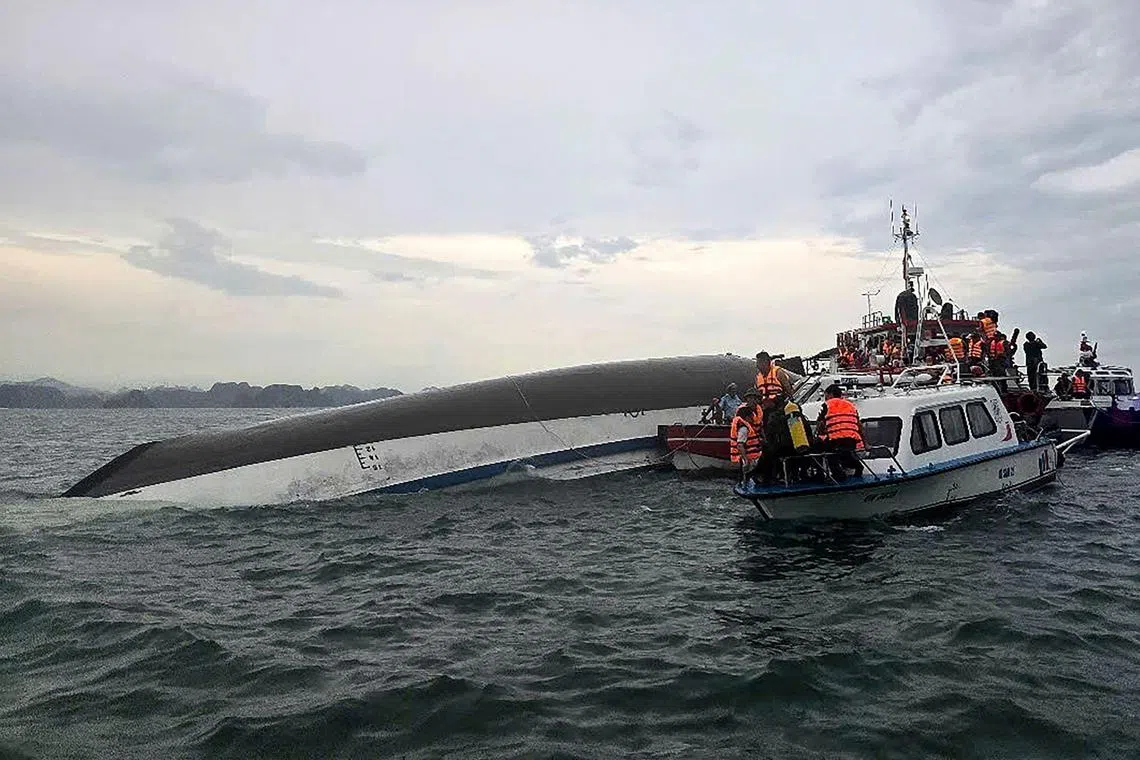Typhoon Wipha tears through southern China, threatens Vietnam’s coasts
Sign up now: Get ST's newsletters delivered to your inbox

People wade through a flooded street in Manila, on July 21.
PHOTO: AFP
Follow topic:
Typhoon Wipha tore across southern China with heavy rain and gale-force winds on July 21, a day after it sliced through Hong Kong and Macau, and left at least five dead in the Philippines.
Wipha made landfall with winds equivalent to a Category 1 hurricane in Taishan in the southern Chinese province of Guangdong late on July 20, setting off heavy downpours in the cities of Yangjiang, Zhanjiang and Maoming.
It weakened into a storm as it made its way westwards and then veered southwards.
China’s forecasters said coastal regions – including Guangdong, Guangxi, Hainan and Funan – would experience intense rainfall until early on July 22.
About 20 rivers across China were reported to have broken their banks, flooding nearby areas, according to state broadcaster CCTV.
But many of these areas quickly recovered from the typhoon’s impact, it said.
Wipha, the sixth typhoon of 2025, brought heavy showers, sea swells and winds of up to 175kmh as it skirted the southern edge of Hong Kong on July 20.
Hong Kong issued a No. 10 hurricane signal
More than 600 flights were rescheduled in Hong Kong and Macau.
Wipha was expected to keep traversing southern China before moving offshore again and making landfall in Vietnam.
Vietnam has put its coastal provinces on emergency footing, warning that Wipha may cause flooding and landslides. Wipha is forecast to cross Vietnam’s northern coast between Quang Ninh and Ninh Binh provinces.
Vietnam’s Prime Minister Pham Minh Chinh sent an urgent message to the coastal provinces on July 20 to call boats ashore, evacuate people from flood-prone areas, prepare food supplies and rescue equipment, and secure communication infrastructure.
“This is a strong and fast-moving typhoon,” Mr Chinh’s message said.
Vietnam Airlines and its affiliate, Pacific Airlines, cancelled at least nine domestic flights on July 21, adding that more delays and reschedules are expected.
Budget airline Vietjet on July 21 cancelled 12 flights, including some to South Korea, due to the typhoon.
With a long coastline facing the South China Sea, Vietnam is prone to typhoons that are often deadly.
In 2024, Typhoon Yagi killed around 300 people
Monsoon rain stoked by Wipha, meanwhile, drenched large swathes of the Philippines on July 21, triggering floods that led to the suspension of classes and work in the capital region and in nearby cities and provinces.
Emergency response officials said at least five people were killed, and close to 100,000 people displaced from Wipha’s onslaught over the weekend.
Dozens had died in recent days in Vietnam and South Korea from monsoon rain and a generally rainy week across the region.
At least 35 people died
In South Korea, at least 18 people died following days of torrential rain that set off landslides in the southern and central parts of the country. Severe weather there eased on July 21.
At Gapyeong, some 62km north-east of the capital Seoul, some residents recalled narrow escapes from the floods after 173mm of rain deluged the area over just 17 hours on July 20.
Gapyeong was among a number of places that saw a record amount of rain in a single day and broke the previous high for national daily precipitation of 156.3mm that was set on Sept 30, 1998.
While the rain has eased, the national weather agency has now issued a nationwide heatwave watch.

At least 35 people died after a tourist boat ferrying families around Vietnam’s famed Halong Bay capsized on July 19, following a sudden thunderstorm.
PHOTO: AFP


